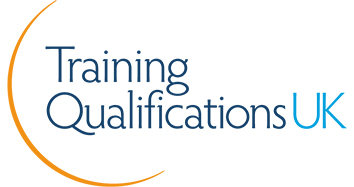
Do you want to be a teaching assistant?
If you love working with children, a career as a classroom assistant could be perfect for you. If, however, you don’t know how to become a teaching assistant and you don’t have the appropriate qualifications, then Stonebridge is here to help. Embark on a journey towards your new career and receive the finest teaching assistant training, before finding your dream job where you will be supporting teaching and learning. To help you decide if this is the right choice for you, we have outlined what a teaching assistant might do in an average day…
8:00am – Help the Teacher Prepare
Before the children start to arrive, teaching assistants tend to help the lead teachers prepare the classroom. Children often turn up in dribs and drabs which means that there should be activities prepared to entertain them when they get there. Teaching assistants will be responsible for setting up these activities, helping with table layouts and ensuring everything is in order to begin straight away. Teachers may also require help making learning materials before the first lesson of the day. As a teaching assistant, you would often spend your mornings cutting, sticking and creating stimulating resources for the classroom.
8:30am – Greet the Students
From this time onwards, children start to arrive at school. For safety purposes, it is very important that children are greeted and received from their parents as they arrive. This is a busy period for the teacher and often the children’s parents will have questions to ask or information to provide the teacher. At this time a teaching assistant may be required to join the teacher in the welcome process, however it is more likely that they will be left in charge of the children who have already arrived. The teaching assistant will help the children deposit their coats and bags and then watch over them as they engage in free play.

9:00am – Registration and Initial Activity
By now all of the children should have arrived and they should be ready to start the day. First of all, the teacher will need to take the register. This means the teaching assistant must make sure that all of the students are sat quietly and listening. An accurate register is extremely important for school records and for safety purposes in the unfortunate event of a fire. Following the register, the teacher will usually lead a brief introductory activity. This activity often acts as a reminder for yesterday’s work. Teaching assistants should help the teacher by watching over the class and making sure all of the students are getting involved.
9:30am – Guided Reading
Learning to read is a vital part of a child’s development. In early years education in particular, guided reading is an important time of the day. As the lead teacher cannot always spread themselves around the entire class, a teaching assistant’s support is essential. Sometimes, the classroom assistant will simply be helping the teacher to make the rounds; visiting each student and helping them to understand any difficult words. In other instances, the teaching assistant will spend more of their time helping students with special educational needs. By spending time with these students every day, teaching assistants will become experts on how to help these students succeed.
10:00am – First Lesson
As a general rule, children tend to be more focused in the morning. For this reason teachers often choose to timetable the more academic subjects like English, maths or science at the start of the day. These lessons usually follow rigid structures and teachers often need help in order to streamline the process. At the beginning of the classes, classroom assistants will be responsible for dividing children into groups, handing out books and making sure all of the children have access to the correct stationary and resources. When the teaching is in progress, teaching assistants will play a large part in keeping the class calm and attentive.

11:00am – First Break
It’s a well-known fact that young children have a short attention span. This is why it is important that they have regular breaks in which they can release any pent up energy and prepare to focus on the next class. Before heading to the playground, children will need to be dressed appropriately and in possession of a mid-morning snack. Prior to heading outside, they will also need to use the bathroom and wash their hands. This process can be lengthy and arduous, but an enthusiastic and skilled teaching assistant will speed things up and allow the children more time to play outside.
11:30am – Second Lesson
After a short break, it will be time to move on to another lesson. As with the first lesson, teaching assistants will be expected to help hand out books and monitor the progress of the students. Teachers would also expect their classroom assistants to be standing by in case of any problems. For example, if a child was being disruptive, the teaching assistant may be tasked with removing them from the class and calming them down. Alternatively if the problem was severe and required the teacher’s full attention, the teaching assistant may need to temporarily assume the role of lead teacher and take over the class.
12:30pm – Lunch
Getting children ready for lunch requires a team effort from both teachers and teaching assistants. All students need to pack away their lesson materials, use the bathroom, wash their hands and line-up in order to walk to the dining hall. In some schools, children will be divided into two groups; those who bring packed lunches and those who eat school meals. It is important that the teaching assistant is aware of who should be doing what, as well as monitoring children who have specific dietary requirements. After lunch, TAs must help teachers lead their classes to the playground and keep an eye on them until it’s time to go back inside.

1:30pm – Third Lesson
In many schools, the third lesson is often more of a practical or creative subject. Design technology, art, music or PE are examples of these kinds of lessons. Due to the practical nature of these classes, children need to be firmly watched over to make sure they don’t hurt themselves. Teaching assistants may be required to help children with cutting, sticking and painting or watch over them when they are using sports equipment. These classes can be very exciting for the children. This means that the classroom assistant will have to help the lead teacher keep the children calm and make sure they understand the instructions.
2:30pm – Final Break
Most primary schools have one final break towards the end of the day. This helps the class to blow off some steam before they go home to their parents. Whilst in the playground, TAs will be responsible for watching over the children and making sure they are playing safely. Along with the teachers, they will be tasked with resolving any conflicts between students and helping children who have injured themselves. They must also make sure that the children are staying on the school premises and keep an eye out for anything that appears suspicious. If a young child needs the toilet during break time, the teaching assistant may also have to accompany them inside the building.
3:00pm – Recap and Prepare Children to Leave
After the final break, the teacher will start preparing the children to go home. This may involve a final activity which will allow the children to recap what they have learned that day. At this point the teaching assistant may be responsible for handing out homework and any information letters that need to be taken home. After this, the teaching assistant will see to it that all of the children have used the toilet and then begin helping them get dressed and ready to leave. When everyone is ready to go, there may be a few minutes left over during which the teacher or teaching assistant may play a short game, keeping the class entertained until the end of the day.

3:30pm – Ensure Children Leave Safely and Tidy Up
At 3:30pm parents will start to arrive at the school. Teaching assistants must help the teacher make sure that each child stays put until their agreed guardian arrives to pick them up. Certain parents may have issues or queries to discuss with the staff, and given that the TA spends all day with the children, they should be more than qualified to provide answers. Once all of the students have been safely collected, the teacher may need assistance cleaning the classroom and setting things up for tomorrow. However, if all of these tasks are complete, the classroom assistant will be free to go home and relax.






Leave a Reply